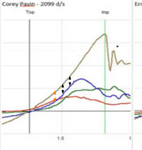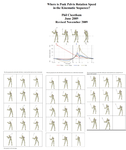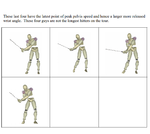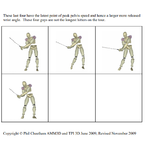WILDTHING
Well-known member
- Joined
- Sep 16, 2018
- Messages
- 893
- Reaction score
- 360
- Handicap
- 15
Not sure this would interest many of you who aren't into golf biomechanics but here are some kinematic graphs of several PGA pros . It's basically showing the how fast parts of their bodies are rotating during the downswing.
Pelvis (red line)
Thorax which is the ribcage (green line)
Lead arm (blue line)
Club (brown line)
I was surprised to see one pga pro who seems to cast almost immediately in the downswing. Can you figure out which one it is? Actually there is almost another but he doesn't progressively cast all the way in the downswing.
Can you also figure out when 'Release' seems to occur?
You might want to magnify your computer screen to see more detail (for my computer I press 'Crtl' and '+' button)

Pelvis (red line)
Thorax which is the ribcage (green line)
Lead arm (blue line)
Club (brown line)
I was surprised to see one pga pro who seems to cast almost immediately in the downswing. Can you figure out which one it is? Actually there is almost another but he doesn't progressively cast all the way in the downswing.
Can you also figure out when 'Release' seems to occur?
You might want to magnify your computer screen to see more detail (for my computer I press 'Crtl' and '+' button)

Last edited:













